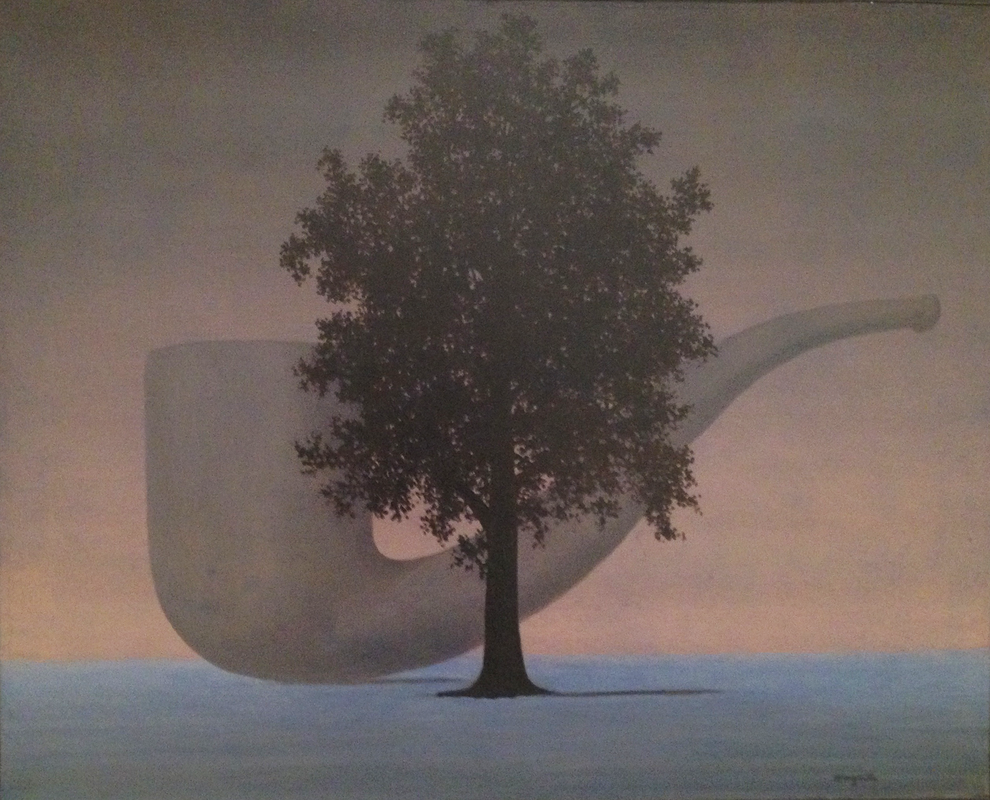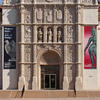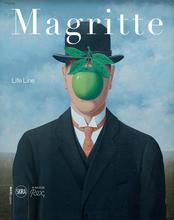More about The Shadows
- All
- Info
- Shop

Contributor
What do a big-ass pipe and a tree have in common? Nothing...or…everything?
Contradiction in Magritte’s work was part of his quest to reconcile opposites. He used unlikely juxtapositions of common objects to puzzle through the similarities and differences of the everyday. He was less woo-woo than many of his surrealist brethren, focusing not so much on the spontaneous powers of the subconscious and more on the ability of dislocation (removal of an object from its expected context) to provoke thought and even incite social change. So perhaps there’s something rather subversive about this enormous, befuddling pipe and tree perched on an eerie horizon.
If you see the pipe and think “Aha! Magritte!” that’s because it’s a specter of his most famous work, The Treachery of Images. You know, ceci n’est pas une pipe, etc. etc. The man loved pipes, apples and bowler hats. In his art, they’re an iconography of the ordinary, popping up in his work when paired with humor, danger, or sex to catch us off guard and make us second-guess their innocuousness.
This piece was made in Magritte’s late career. By this time he had reached a modest level of fame, although his paintings weren’t selling for as much as those of his flashy colleague Dali. Unlike those gaudy, bohemian Paris surrealists, Magritte was living a quiet, middle class life in Belgium, disguised as a square while making rather twisted art in his living room studio.
A couple of months before his death, Magritte wrote to his pal, French philosopher Sarane Alexandrian, “There are no ‘subjects’, no ‘themes’ in my painting. It is a matter of imagining images whose poetry restores to what is known that which is absolutely unknown and unknowable." He always managed to keep it spicy, providing us with made-you-look art that still puzzles to this day.
Sources
- “Magritte’s Last Years Gallery.” Matteson Art. Accessed December 27, 2017. http://www.mattesonart.com/1961-1967-later-years.aspx
- Hanson, Abigale. “René Magritte.” The Art Institute of Chicago. 1993. Accessed December 28, 2017. http://www.artic.edu/aic/collections/citi/resources/Rsrc_001620.pdf












